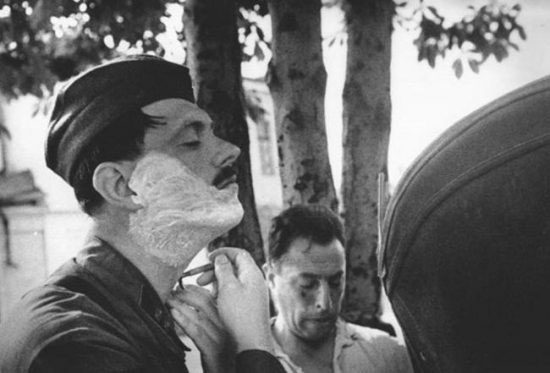Not shaving before a flight, keeping a secret talisman, and other rituals were strictly followed by Soviet pilots during World War II.
1. Not Shaving Before a Flight
During the war, military pilots faced death daily while participating in bombing missions. However, Russian pilots held a strong belief that they would be safe if they did not shave before taking off.
This was one of the most strictly adhered to rules that the top Soviet pilots never forgot. Although they sometimes shaved, it was always the night before a mission; they would never shave on the day they were flying.
“We would wake up in the early morning before dawn, a few hours before we appeared at the squadron’s control station. We would wash our faces but never shave – if we wanted, we would only shave in the evening. Once, Petya Govorov shaved during the day. After the lights went out, there was suddenly an alarm. He didn’t even have time to finish shaving and just wiped the foam off his face with a towel. He did not return… It can be said that shaving before departure is a bad omen,” recalled retired serviceman Yuri Khukhrikov from the 566th Assault Aviation Regiment.
Modern pilots and astronauts also limit shaving before flights, and they will not give interviews, accept flowers, or pose for photos.

Soviet pilots never shaved on the day of their flight.
2. Keeping Secret Talismans
Pilots carried special items they considered talismans, helping them escape from death’s grip.
These items may seem insignificant at first glance, but they held critical meaning for the pilots’ survival.
“Kolya Pribylov – a pilot who only wore one winter uniform year-round during bombing flights. Even in summer, when people told Kolya, ‘Change your clothes, you’ll exhaust yourself!’ – he replied, ‘No! This uniform is very lucky; the enemy won’t attack me if I wear it,’” shared Grigory Cherkashin from the 672nd Assault Aviation Regiment.
Other pilots kept lucky cigarette cases, watches, and even religious icons despite the general aversion to religion in Soviet society.
A crucial aspect of these talismans was that they had to keep their lucky charms secret from everyone, as flaunting them would cause them to “lose their power.”
3. Overcoming the Threshold of Fate
Soviet pilots believed in the significance of numbers. Many believed that the numbers 3, 4, 33, and 44 were unlucky, and therefore, flights associated with these numbers were considered the riskiest, with a higher chance of being shot down.
When the time for these ominous flights arrived, Soviet pilots did their utmost to complete their missions as quickly as possible and return to base.
4. Deceiving Death by Exchanging Personal Items
Believing they could outsmart death, Soviet pilots exchanged personal items with one another. They thought that by doing so, death could be confused, and they would escape unharmed.
Pilots swapped even the smallest trinkets and sometimes clothing, hoping that both participants would return safely after completing their missions.




















































